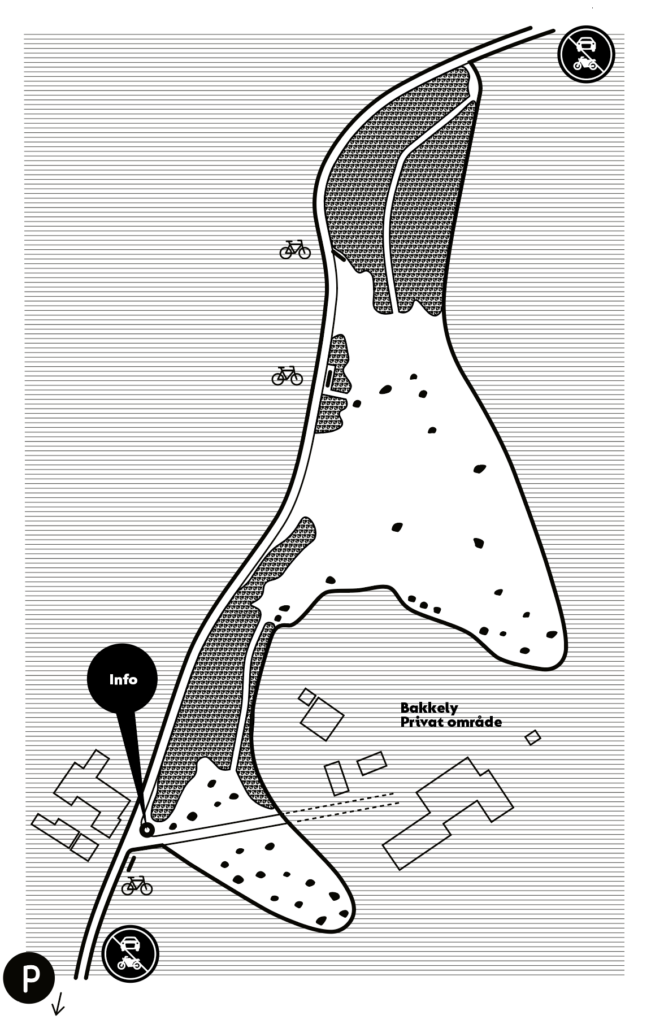
English:
The sculpture park houses nearly half of Ole Christensen’s life’s work, while over 80 decorations and sculptures are installed throughout the rest of Denmark and in a few locations abroad. These works were created while he lived at the site from 1958 to 2000. On the grounds, there are several small quarries where Ole Christensen himself quarried granite until 1963.
Ole Christensen (1932–2000) was first trained as a stonemason. After receiving his journeyman’s certificate in 1951, he continued his studies at the Royal Danish Academy of Fine Arts’ sculpture school from 1952 to 1958, under the guidance of professors like Einar Utzon Frank. The sculpture park is located at Karin and Ole Christensen’s home, Bakkely, along the original road from Hammershus to Olsker Round Church, now called ”Højlyngs Stien.” It was here that Ole Christensen established his workshop in 1958. This remains the private home of the family, with no public access. In the years that followed, Ole became a central figure both as an artist and through his involvement in art politics.
He left a significant mark, particularly in connection with the exhibition building at Gudhjem Museum and the process of constructing the new art museum in Rø. In 1985, Ole Christensen became a member of the Academy Council, where he served for a time on the church committee. 1985 was also the year when Ole Christensen was awarded the lifetime grant from the Danish Arts Foundation. Ole was deeply fascinated by nature and organic forms and primarily worked in granite and clay, but also in wood, iron, bronze, and gold.